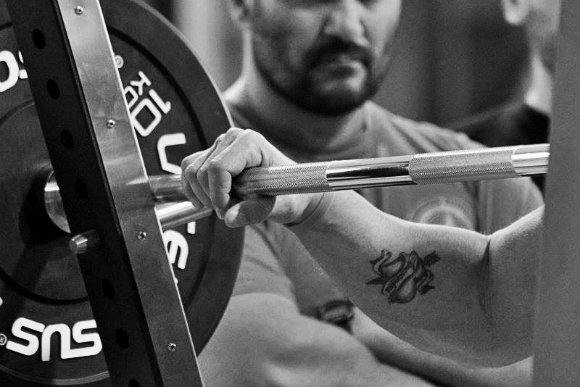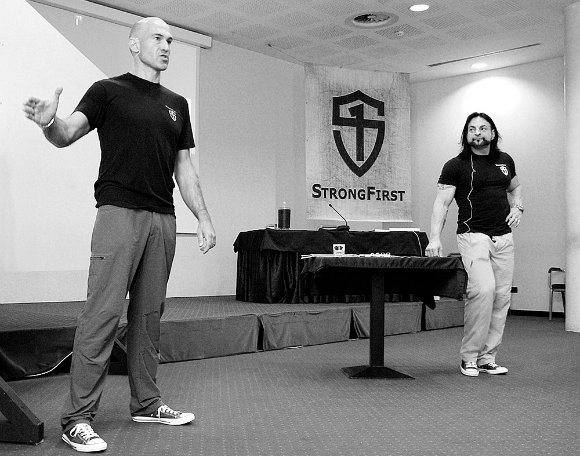In the first installment of this discussion on “pure” strength training versus a hypertrophy based approach we dug in on the qualitative differences between the two approaches. In Part 2 here, we’re going to dive into the quantitative differences and show you just how much more you can get from a “pure” strength program with less volume and a lower risk of injury. Remember, the gym should support our outdoors training such as hiking, trail running, and climbing. Not the reverse.
Remember, this is not an all or none situation. Focused training periods that emphasize muscular growth and size (aka hypertrophy) are a key component of a well-rounded annual training regimen. But as we highlighted last month, too many people train exclusively in this manner. This is quite simply not the most effective way to train and prepare for extended backcountry hunts. Let’s dig in.
Hypertrophy training typically involves 8 – 12 repetitions per set, repeated over 3 – 4 sets per exercise or lift. The number of sets in a typical workout will generally range from 9 – 24 depending on the different lifts or body parts being targeted in a given workout. The more isolated your approach, the more repetitions. So at the low end of any given workout you’ll be doing 200+ reps in total and at the high end 1,100+ if you’re taking a hard core, isolationist bodybuilding approach. That’s a ton of volume and takes a ton of time. Not just in the gym but also in terms of recovery.
With pure strength training, repetitions typically range from 1 – 6 per set, with the 3 – 5 rep range being the most commonly used. The number of sets per exercise or lift also typically falls within the 3 – 5 range with 5 – 7 different lifts per training session being the norm. This style of training usually involves “compound movements” or lifts that utilize whole sections of the body. The bottom line is for any given lift, you’ll be using more total muscle mass and more muscle groups together than in a hypertrophy based approach. Put simply, this saves an immense amount of time with nothing but benefits to you and your body. To compare the numbers, at the low end you’ll be doing 45 total reps in any given workout and at the high end 175 total reps, so this equates to a massive volume difference between the two training approaches!
And remember the total volume outlined above for a hypertrophy based program is usually segmented into body parts with most hypertrophy training sessions hitting no more than 2 – 3 body parts or regions per session. We’ve all seen these programs before: back and bi’s on one day, chest and tri’s the next. Again, this requires an immense amount of time because you’re spreading huge volumes of work over multiple, isolated body parts or regions. But the biggest difference by far lies within the intensity of each lift.
A quick but important note regarding intensity: the most commonly used method for outlining the intensity of any given lift is a percentage of your 1 Repetition Maximum or 1RM. Essentially the absolute maximum amount of weight you can lift or move for a given exercise just once. This number has massive implications on the outcomes of any given training session. For hypertrophy training most people will use weight that falls in the 50 – 70% 1RM range, whereas in “pure” strength training you’ll typically lift weights in the 70 – 90% 1RM range. To summarize, with hypertrophy training you’ll be spending more time lifting less weight. And as we’ve said countless times before the number one training program consideration for the dedicated or aspiring mountain hunter is power to weight ratio. To achieve this you quite simply need to move more weight not less. And by more we do not mean more total volume but heavier weight for any given lift or exercise.
By now it should be crystal clear that hypertrophy training takes longer and with this approach you’re moving lower weights. Will you get bigger? Probably. But for every minute spent in the gym you will not be getting as strong as you could with a more strength focused approach. Don’t believe us? Do the math yourself. The numbers don’t lie.
The last key differentiator between the two approaches is the rest period between sets. With “pure” strength training it is absolutely paramount that you take a 3 – 5 minute rest between each set. This feels like an eternity, especially if you’ve been training at higher volumes, but we cannot stress this point enough. The nervous system needs time to recover in between each set especially when lifting in the 80 – 90% 1RM range. The added reason is the emphasis on compound movements as we noted above. The deadlift for example, when done correctly, literally uses the entire posterior chain (the back of the body), literally from your neck to your feet. When this much muscle mass is recruited at once, the nervous system needs time to recuperate so it can generate that much power on the next set. This is way more time than you’ll typically see recommended in a hypertrophy based program where physiological adaptations are the primary focus (see Part 1 for a refresher on this point). The other key difference with a strength based approach that ties into this whole notion of rest intervals is that you ideally never go to failure with a given lift or set, unless you’re attempting a 1RM max lift. We want clean movements over the full-range of the lift. Quality in, quality out. Garbage in, garbage out.
Our friends at StrongFirst cover this integral rest interval topic in more detail in the following articles. These are both excellent reads on the subject: 300 Seconds – Maximizing Rest Intervals and Long Rests: Russian Science To The Rescue.
The added benefit of longer rest intervals is injury prevention. As fatigue sets in form fades and poor form leads to torque, sheering forces and stresses on joints and soft tissue structures that can, over time, lead to overuse injuries.
The bottom line is whether we’re debating the aesthetic benefits, the time required, the strength returns on time invested, the injury risks or most importantly the in-the-field applicability of the two approaches there is little doubt. A lower rep, fewer sets strength based program should at minimum become part of your annual regimen. In our opinion, admittedly a biased one, the hunter athlete should focus primarily on “pure” strength training methods and let the higher rep, higher volume work play a supporting role. Get strong FIRST, spend time hiking, running and training outdoors. The rest is gravy.
WANT TO TRY A “TRUE STRENGTH” BASED APPROACH. CLICK HERE.



